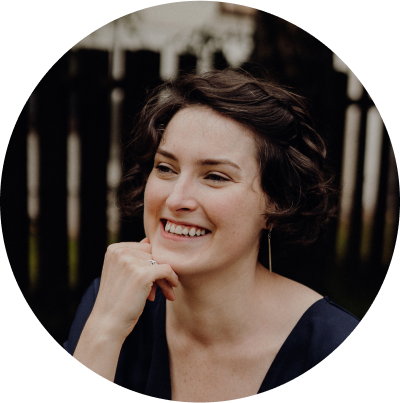The Clean Beauty trade-off.
Clean beauty means non-toxic for both us, humans and the planet whilst also showcasing transparency. This means that the brands are forthcoming with information such as: where are the ingredients sourced, where are the products made and a complete list of ingredients features on the labels, without catch-all categories like “fragrances”.
On paper, this sounds like a dream come true. But this comes at a cost and nothing is ever truly good or bad.
My job is to be open and honest about all the aspects of Clean Beauty. I mostly promote the pros, but I also have to be transparent about the cons.
Let’s go back to how Clean Beauty is perceived on the market. Most individuals believe that clean means natural, aka free from chemicals. This isn’t true for many reasons.
The first one is that “All matter, including us, is made of chemicals. Chemistry is the study of the composition, structure, properties and reactions of matter.” Water, air, a strand of grass, all are chemical.
However, when we think of chemicals, we are really talking about are “synthetic ingredients” aka “men-made in a lab”.
The second reason is that “Clean” stands for safe. In the sense that it doesn’t jeopardise your health, now or in the future.
There are thousands of synthetic ingredients that are safe to use and there are also synthetic ingredients that are safer than their natural counterparts. It’s just a matter of knowing what’s what and knowing where to look for information. This is why synthetic ingredients 100% belong in Clean Beauty.
The beauty and personal care industry is very profitable. It was in fact valued at USD 482.8 billion in 2021. For decades, manufacturing companies have been looking at increasing their profit margin and the industry moves too fast to do in-depth studies on the impacts of ingredients on health.
Over the years, many ingredients have been linked to health issues such as breast cancer and parabens because of their endocrine-disruptive effect, epigenetic changes have been linked to bisphenol A (used in packaging), and Triethanolamine was linked to immuno-toxicity, just to name a few.
The manufacturing companies come out with new components quicker than studies and research are done. Furthermore, to have conclusive results on each compound could take decades and companies aren’t willing to wait that long before having their new products or ingredients hit the market. Which, let’s be honest is fair enough. I don’t want to wait that long either to know!
As a consumer, I’d much prefer to have the guarantee that the self-care rituals and products I use won’t impact my health negatively.
This is why clean beauty products if they truly are clean, use only ingredients that have been around for a long time and that have been proven to have no adverse effects on our health.
However, when it comes to sustainability (and yes, prioritizing our health is sustainable), there is often a trade-off that happens. This is no different with skincare, makeup and personal care products.
Packaging and ingredients both play a role in the safety and performance of products. Did you know for instance that 50% of the performance of mascara is in the packaging?
Preservation of the product is paramount when it comes to safety. This includes the manufacturing process as well as the formula.
The manufacturing process needs to ensure that it will happen in a setting where undesirable microorganisms won’t be able to proliferate, this step is called primary preservation. The formula needs to include chemical as well as physical methods to prevent microbial and fungi contamination, aka secondary preservation. (This is also why you wash your hands before getting product from a jar, FYI).
Clean Beauty products are a sustainable choice but the trade-off here is that often they are formulated without preservatives or with packaging that doesn’t offer as much of a barrier against microorganisms.
This impacts shelf life and PAO, making them shorter. Knowing what to look for on the labels is important.
✨The PAO or period after opening identifies the useful lifetime of a cosmetic product after its package has been opened for the first time.
✨The shelf life is the length of time a product may be stored without becoming unsuitable for use or consumption. (think of the “use by or best before date on food).The PAO symbol is shown on labels by a graphic symbol that depicts an open cosmetics pot in which is written number of months (M) or years. (Y) This tells you how long you can use a product for after you’ve opened it. (Think about “use within 4 days” as written on food packaging.)
✨The shelf life is pictured by an hourglass graphic symbol. This matters because even if you can’t see anything wrong in the product, the active ingredients degrade over time, losing potency and fungi or microorganisms. Most of the time, you can’t see it with your naked eyes, but your skin and the hydrolipidic film will know. Not paying attention to the PAO and shelf life can lead to acne, fungal infection, pH disruption…
But if you can’t see anything because you threw away the box and the product itself doesn’t showcase either (if you’re reading this and you manufacture skincare or makeup, please make sure the actual product showcases this. It’s a pet-peeve of mine) here are some guidelines of how long you can keep a product for, unless stated otherwise.
Makeup
- Mascara: 3 months
- Foundation and concealer: between 6 months to 2 years
- Lipstick: 1 to 2 years
- Pencil eyeliner: 1 year sharpening it before each use removes bacteria, as long as your sharpener is clean.
- Cream or gel eyeliner: 2 to 3 months
Skincare
- Moisturizer: from 3 months up to a year, depending on the formula
- Eye cream: 6 months to 1 year up to a year, depending on the formula
- Face oil: 1 year (oils can get rancid)
- Vitamin C serum: 3 to 6 months, depending on the formula and the packaging
As always, common sense is key and if you notice that your product has changed in texture or smell, colour or has little black dots in it… – throw it away, responsibly, no questions asked. Better safe than sorry.
I believe that nothing is ever perfect and although the clean beauty trade-off needs to be taken into account, they are worthwhile.
Sustainability touches all aspects of our life, including health. Prioritizing our physical health through the use of safe self-care products and prioritizing our mental health through self-care habits make a good baseline to a sustainable life. When our health is good, we tend to not resort to “convenience” as much. I believe also that a shorter PAO and shelf-life can be the push some of us need to be more minimalistic in the products that we keep on hand, keeping our bank account healthier and limiting overconsumption!

